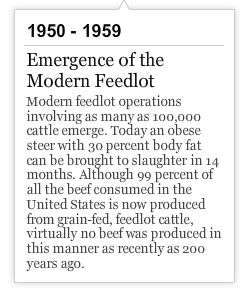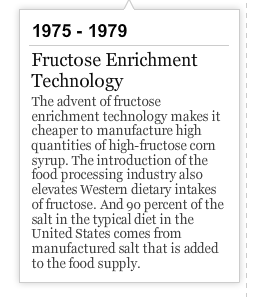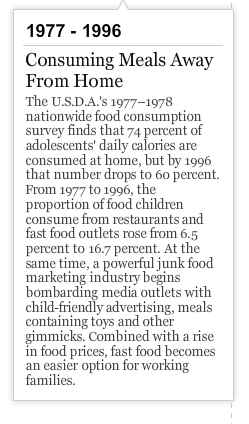 I have just returned from two weeks in Italy. I was a little nervous about eating while in this country known for its excellent cuisine, as I limit my dairy and wheat intake due to food sensitivities and allergies. I remembered from my past adventures there that fresh fruits weren’t a problem when purchased at fruit stands or farmers’ markets (it is cherry season); however, a good salad is hard to come by (except for Coquinarius in Florence).
I have just returned from two weeks in Italy. I was a little nervous about eating while in this country known for its excellent cuisine, as I limit my dairy and wheat intake due to food sensitivities and allergies. I remembered from my past adventures there that fresh fruits weren’t a problem when purchased at fruit stands or farmers’ markets (it is cherry season); however, a good salad is hard to come by (except for Coquinarius in Florence).
Italians eat a lot of cheese and pasta, yet they are not overweight. In America, we target such foods as unhealthy to eat all the time and sure to add extra pounds, yet is this really true? The only overweight people I saw in Italy, and of course this is a generalization, where the American tourists. Sure, these tourists probably eat the Standard American Diet (SAD) full of processed foods like high fructose corn syrup, yet what about my conceptions of eating mostly raw fruits, vegetables, and nuts as healthy eating? Should I be eating more cheese and wheat?
What is SAD? Dr. Sears explains:
If you were to list the factors that increase the risk of cancer, heart disease, stroke, intestinal disorders – just about any illness – the standard American diet has them all:
- High in animal fats
- High in unhealthy fats: saturated, hydrogenated
- Low in fiber
- High in processed foods
- Low in complex carbohydrates
- Low in plant-based foods
The striking fact is that cultures that eat the reverse of the standard American diet – low fat, high in complex carbohydrates, plant-based, and high in fiber – have a lower incidence of cancer and coronary artery disease (CAD). What’s even more sad is that countries whose populations can afford to eat the healthiest disease-preventing foods don’t. The United States has spent more money on cancer research than any country in the world, yet the American diet contributes to the very diseases we are spending money to prevent.
 Clearly as a vegetarian and gardener, I don’t eat the SAD. I have eliminated much of the dairy and wheat from my diet, largely due to digestion issues, yet when consuming these products in Italy, I did not have the same issues I have in America (well, there was morning a brioche that did not agree with me).
Clearly as a vegetarian and gardener, I don’t eat the SAD. I have eliminated much of the dairy and wheat from my diet, largely due to digestion issues, yet when consuming these products in Italy, I did not have the same issues I have in America (well, there was morning a brioche that did not agree with me).
Although I don’t eat meat, I do consume other animal products in limited amounts (I only took licks from my daughter’s gelatos).
Education efforts in the US are not working to change people’s eating habits, but like anything in America, the amount of spending on marketing is largely to blame. It’s all about profits. The New York Times reports:
The need is dire: efforts to shift the national diet have failed, because education alone is no match for marketing dollars that push the very foods that are the worst for us. (The fast-food industry alone spent more than $4 billion on marketing in 2009; the Department of Agriculture’s Center for Nutrition Policy and Promotion is asking for about a third of a percent of that in 2012: $13 million.) As a result, the percentage of obese adults has more than doubled over the last 30 years; the percentage of obese children has tripled. We eat nearly 10 percent more animal products than we did a generation or two ago, and though there may be value in eating at least some animal products, we could perhaps live with reduced consumption of triple bacon cheeseburgers.
Americans didn’t always eat this way. It all started in 1815 with the emergence of refined sucrose. The New York Times offers a fascinating timeline of the development of the SAD:
The Standard American Diet, also referred to as the Western pattern diet, looked a lot different a few hundred years ago. People mostly consumed fruits, vegetables, wild grains and seeds, fish and occasionally meat. Today many Americans gorge on sugars, refined flour and processed food. This selection of events tracks the devolution of the American diet.
This post was not only inspired by my recent trip to Italy, but by a report in Natural Society titled “The Ultimate Paradox: The U.S. An Overfed and Malnourished Nation”
One problem is that even with all of this calorie consumption, people aren’t obtaining the basic nutrients their bodies crave in order to carry out its basic functions. This, in turn, leads to more eating, as the body feels ‘hunger’ as a neurological response to depleted nutritional stores.
Take for example, the chemical process that occurs when we eat high fructose corn syrup (often made from GMO corn). When we eat this nutrition-less black hole of a food, we undergo a fierce cycle of craving and eating instigated by circulating triglycerides. Belly fat was especially pronounced in a Princeton study. Instead of feeling full after we drink sodas or eat packaged, convenience foods that are made with high fructose corn syrup, we feel hungry again. Our natural satiety isn’t quelled and the vicious loop to eat more foods with no nutrition ensues.
Second, many of our agriculture practices have completely ruined the soil we grow food in, so we no longer enjoy the proper nutrients that were once provided for abundantly by just having highly fertile turf on which to plant our crops. We eat too many processed foods, and when we do eat a vegetable or fruit, it often has been grown in a mineral-depleted soil that has been improperly used since at least the 1950′s.
 I actually lost weight in Italy. We did a lot of hiking, but I really think it has to do with the food being freshly made. The sauces on the pasta didn’t come from a jar or a can. The pastas were homemade. Even though we eat organically, not all of my family’s food originates from whole food ingredients in my own kitchen. When we eat pasta, we buy it. We do can our own tomato and pesto sauce from the garden, but it is not enough to last us all year. We do not make our own cheese. I also think the prevalence of olive oil in Italy is beneficial as well.
I actually lost weight in Italy. We did a lot of hiking, but I really think it has to do with the food being freshly made. The sauces on the pasta didn’t come from a jar or a can. The pastas were homemade. Even though we eat organically, not all of my family’s food originates from whole food ingredients in my own kitchen. When we eat pasta, we buy it. We do can our own tomato and pesto sauce from the garden, but it is not enough to last us all year. We do not make our own cheese. I also think the prevalence of olive oil in Italy is beneficial as well.
Although I still feel it best to limit my dairy and wheat intake, I am rethinking my ideas about diet. A recent story shared greatly even reevaluates what we think is healthy eating. According to heart surgeon Dr. Dwight Lundell, M.D., our ideas about fat and cholesterol are all wrong.
The long-established dietary recommendations have created epidemics of obesity and diabetes, the consequences of which dwarf any historical plague in terms of mortality, human suffering and dire economic consequences.
Despite the fact that 25% of the population takes expensive statin medications and despite the fact we have reduced the fat content of our diets, more Americans will die this year of heart disease than ever before.
Statistics from the American Heart Association show that 75 million Americans currently suffer from heart disease, 20 million have diabetes and 57 million have pre-diabetes. These disorders are affecting younger and younger people in greater numbers every year.
Simply stated, without inflammation being present in the body, there is no way that cholesterol would accumulate in the wall of the blood vessel and cause heart disease and strokes. Without inflammation, cholesterol would move freely throughout the body as nature intended. It is inflammation that causes cholesterol to become trapped.
Inflammation is not complicated — it is quite simply your body’s natural defence to a foreign invader such as a bacteria, toxin or virus. The cycle of inflammation is perfect in how it protects your body from these bacterial and viral invaders. However, if we chronically expose the body to injury by toxins or foods the human body was never designed to process,a condition occurs called chronic inflammation. Chronic inflammation is just as harmful as acute inflammation is beneficial.
What thoughtful person would willfully expose himself repeatedly to foods or other substances that are known to cause injury to the body? Well,smokers perhaps, but at least they made that choice willfully.
The rest of us have simply followed the recommended mainstream dietthat is low in fat and high in polyunsaturated fats and carbohydrates, not knowing we were causing repeated injury to our blood vessels. This repeated injury creates chronic inflammation leading to heart disease, stroke, diabetes and obesity.
Let me repeat that: The injury and inflammation in our blood vessels is caused by the low fat diet recommended for years by mainstream medicine.
What are the biggest culprits of chronic inflammation? Quite simply, they are the overload of simple, highly processed carbohydrates (sugar, flour and all the products made from them) and the excess consumption of omega-6 vegetable oils like soybean, corn and sunflower that are found in many processed foods.
The bottom line is to avoid all processed food, even if organic. We need to eat like our ancestors. We need fats, good fats. Thank goodness I love avocados!
Leave a Reply